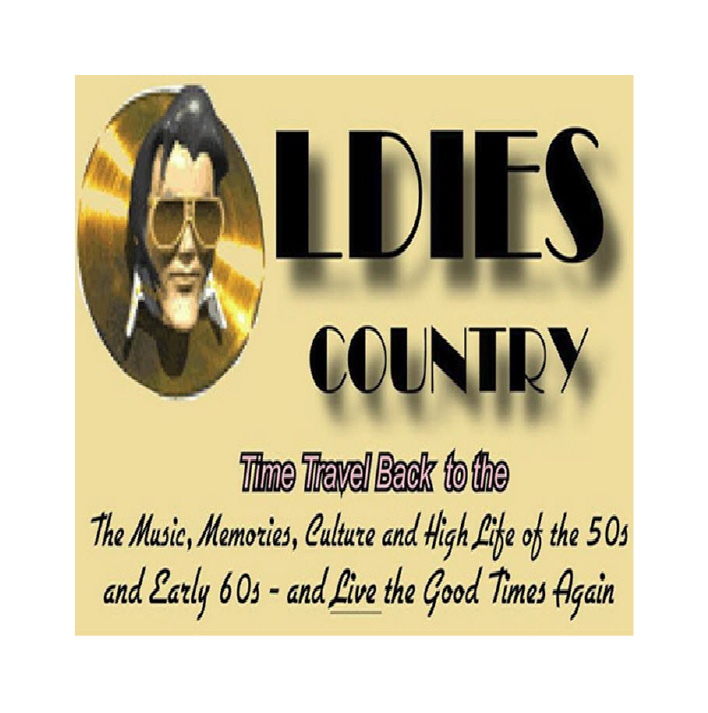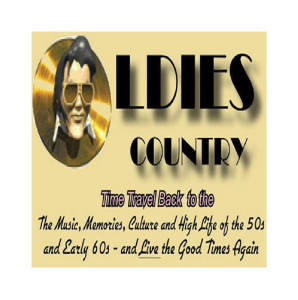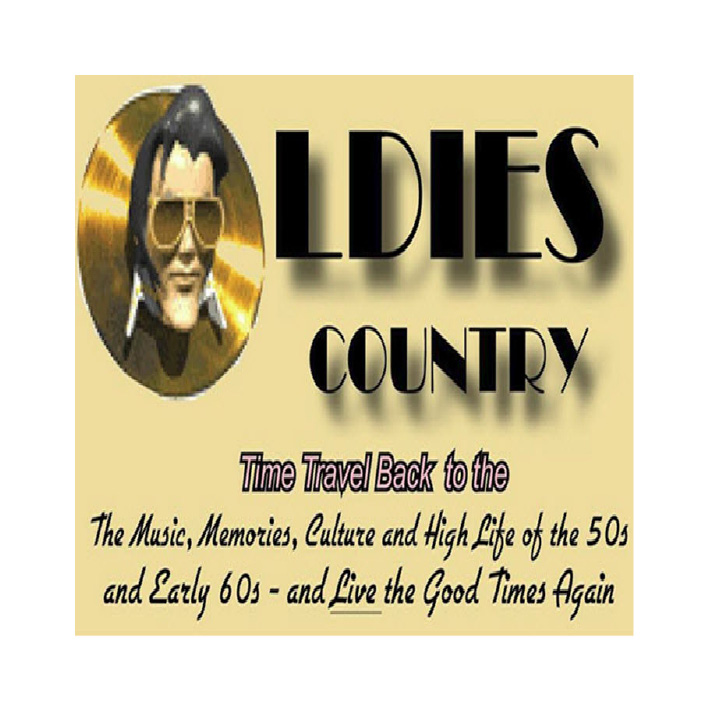Debonair pop composer, arranger, conductor, record producer and occasional singer was one of the most prolific Songwriters with 41 top 40 hits and over 500 songs. He wrote in all the main genres and even performed right up until his final months.
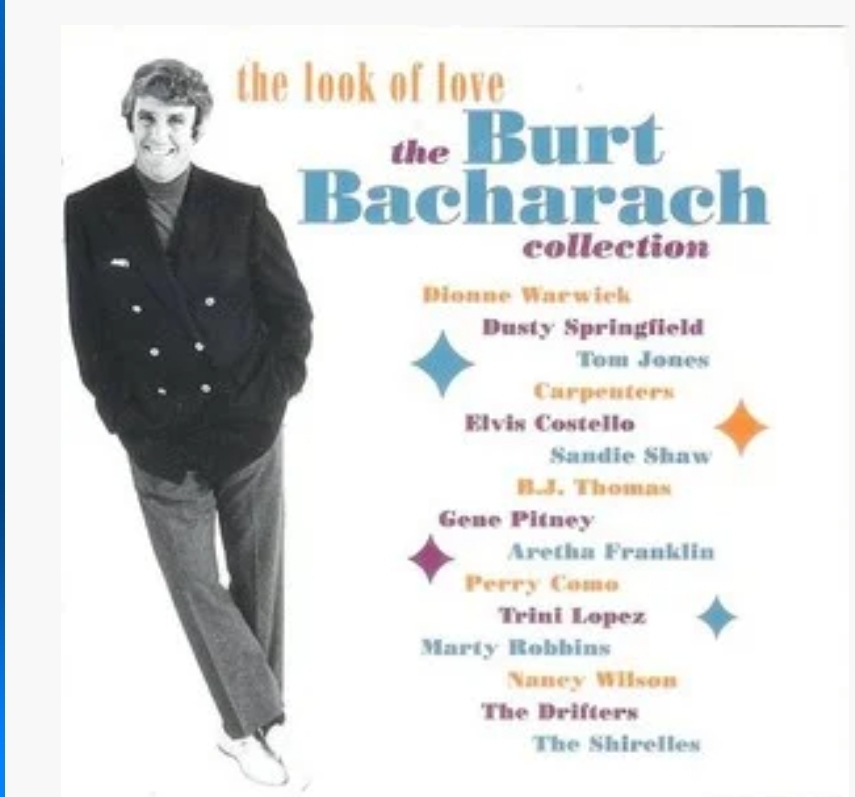
from New York Times By Stephen Holden:
His publicist Tina Brausam confirmed the death. No specific cause was given.
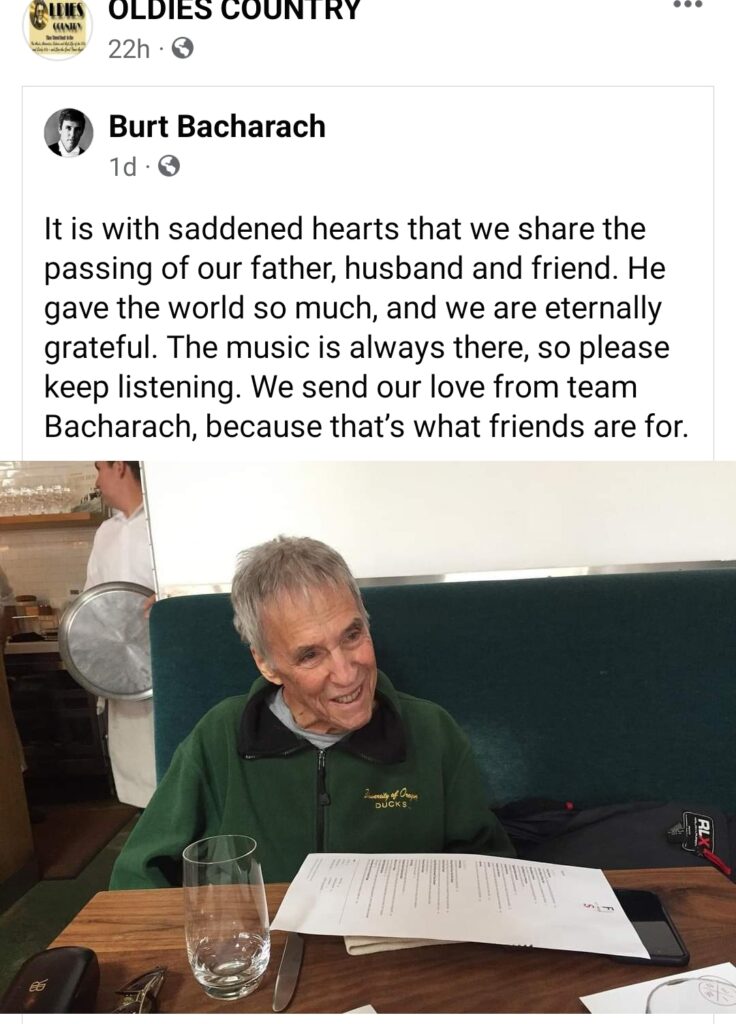
A die-hard romantic, Mr. Bacharach fused the chromatic harmonies and long, angular melodies of late-19th-century symphonic music with modern pop orchestration and embellished the mixture with a staccato rhythmic drive. His effervescent compositions epitomized sophisticated hedonism to a generation of young adults only a few years older than the Beatles.
Because of the high gloss and apolitical stance of the songs Mr. Bacharach wrote with his most frequent collaborator, the lyricist Hal David, during an era of confrontation and social upheaval, they were often dismissed as little more than background music by listeners who preferred the hard edge of rock or the intimacy of the singer-songwriter genre. But in hindsight, the Bacharach-David team ranks high in the pantheon of pop songwriting.
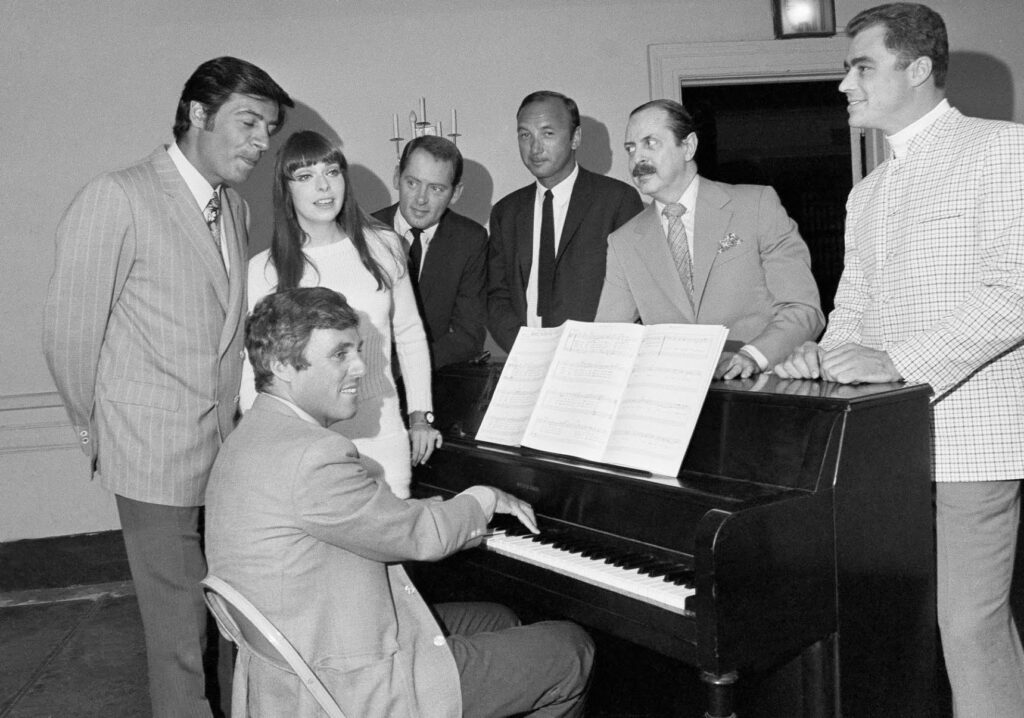
Bacharach-David songs like “The Look of Love,” Dusty Springfield’s sultry 1967 hit, featured in the movie “Casino Royale”; “This Guy’s in Love With You,” a No. 1 hit in 1968 for Herb Alpert; and “(They Long to Be) Close to You,” a No. 1 hit in 1970 for the Carpenters, evoked a world of jet travel, sports cars and sleek bachelor pads. Acknowledging this mystique with a wink, Mr. Bacharach appeared as himself and performed his 1965 song “What the World Needs Now Is Love” in the 1997 movie “Austin Powers: International Man of Mystery,” which spoofed the swinging ’60s ambience of the early James Bond films. He also made cameo appearances in its two sequels.
Mr. Bacharach collaborated with many lyricists over the years, and even wrote some of his own words. But his primary collaborator was Mr. David, seven years his senior, whom he met in a music publisher’s office in 1957. The team’s artistic chemistry solidified in 1962, beginning with the hits they wrote and produced for Dionne Warwick, a gifted young gospel-trained singer from East Orange, N.J.
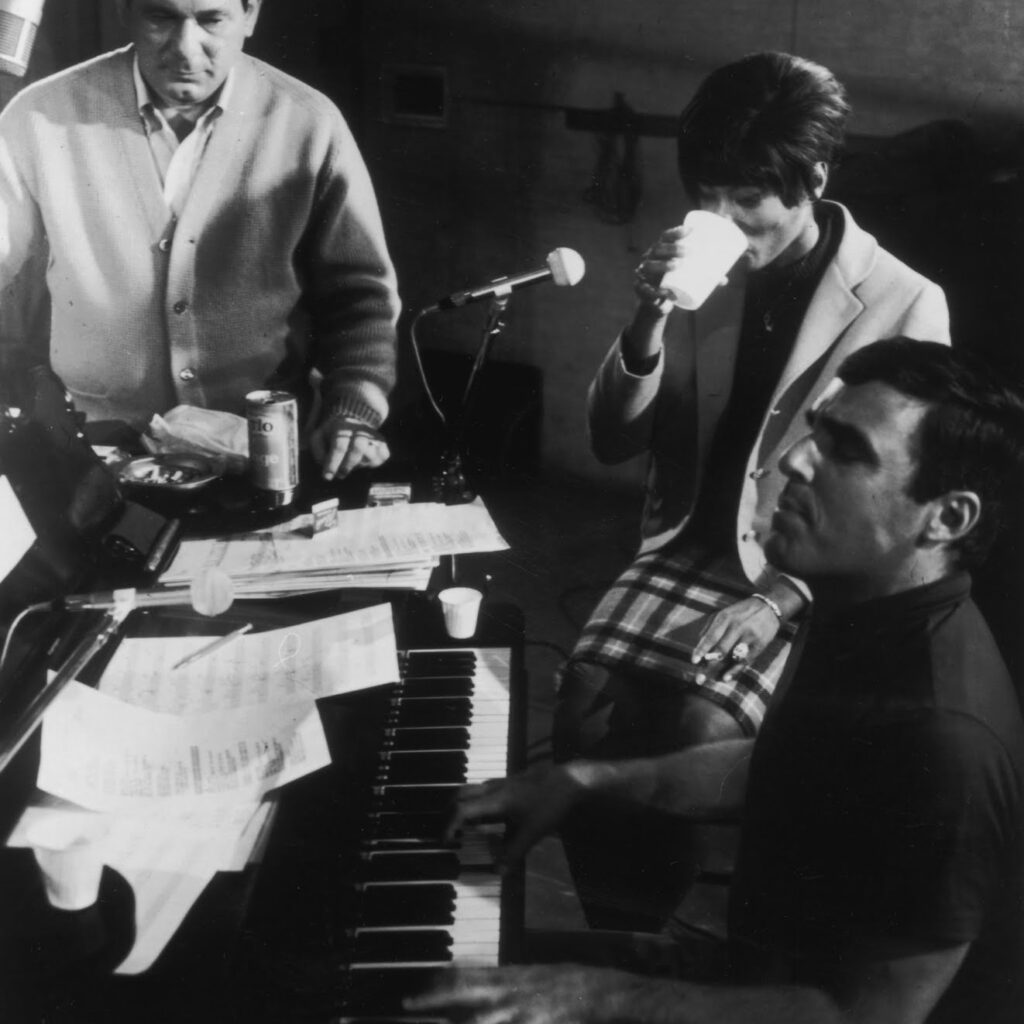
Mr. Bacharach met Ms. Warwick at a recording session for the Drifters that included “Mexican Divorce” and “Please Stay,” two songs he wrote with the lyricist Bob Hilliard. Hearing Ms. Warwick, a backup singer, Mr. Bacharach realized he had found the rare vocalist with the technical prowess to negotiate his rangy, fiercely difficult melodies, with their tricky time signatures and extended asymmetrical phrases.
The artistic synergy of Mr. Bacharach, Mr. David and Ms. Warwick defined the voice of a young, passionate, on-the-go Everywoman bursting with romantic eagerness and vulnerability. Their urbane style was the immediate forerunner of the earthier Motown sound of the middle and late 1960s.
Mr. Bacharach and Mr. David worked in the Brill Building, the Midtown Manhattan music publishing hub, and they are frequently lumped together with the younger writers in the so-called Brill Building school of teenage pop, like the teams of Carole King and Gerry Goffin or Barry Mann and Cynthia Weil. But they rarely wrote explicitly for the teenage market. Their more sophisticated songs were closer in style to Cole Porter, and Mr. Bacharach’s fondness for Brazilian rhythms recalled lilting Porter standards like “Begin the Beguine.”
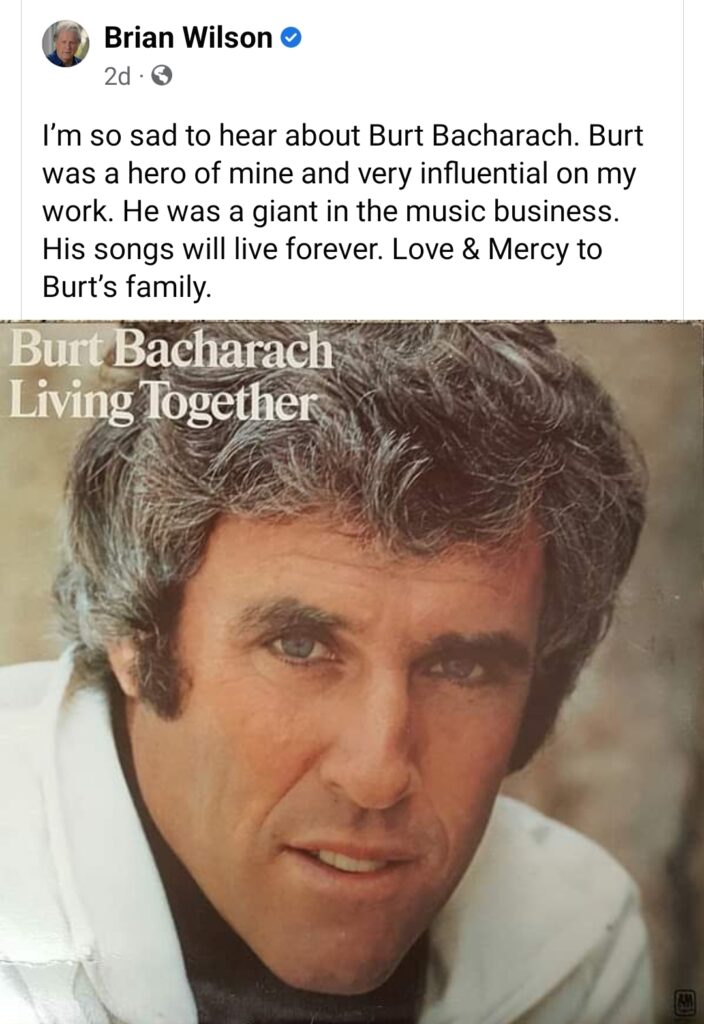
Hits and a Miss
Beginning with “Don’t Make Me Over” in 1962, the team turned out a steady stream of hits for Ms. Warwick, among them “Anyone Who Had a Heart,” “Walk On By,” “Alfie,” “I Say a Little Prayer” and “Do You Know the Way to San Jose.”
Mr. Bacharach’s success transcended the Top 40. He won two Academy Awards for best song: for “Raindrops Keep Fallin’ on My Head,” written with Mr. David, in 1970, and “Arthur’s Theme (Best That You Can Do),” written with Peter Allen, Carole Bayer Sager and Christopher Cross, in 1982. His original score for the 1969 film “Butch Cassidy and the Sundance Kid,” which included “Raindrops,” a No. 1 hit for B.J. Thomas, won an Oscar for best original score for a nonmusical motion picture. And the Bacharach-David team conquered Broadway in December 1968 with “Promises, Promises.”
Adapted by Neil Simon from “The Apartment,” Billy Wilder’s 1960 film about erotic hanky-panky at a Manhattan corporation, “Promises, Promises” was one of the first Broadway shows to use backup singers in the orchestra pit and pop-style amplification. Along with “Hair,” which opened on Broadway that same year, it presaged the era of the pop musical.
“Promises, Promises” ran for 1,281 performances, yielded hits for Ms. Warwick in the catchy but fiendishly difficult title song and the folk-pop ballad “I’ll Never Fall in Love Again,” and was nominated for seven Tony Awards. Two of its cast members won, but the show itself did not. Both “Promises, Promises” and “Hair” lost in the best-musical category to the much more traditional “1776.” It was successfully revived on Broadway in 2010.
With success both in Hollywood and on Broadway, as well as a high-profile movie-star wife, Angie Dickinson, whom he had married in 1965, Mr. Bacharach entered the 1970s not just a hit songwriter but a glamorous star in his own right. It seemed as if he could do no wrong. But that soon changed.
In 1973, Mr. Bacharach and Mr. David wrote the score for the movie musical “Lost Horizon,” adapted from the 1937 Frank Capra fantasy film of the same name. The movie was a catastrophic failure. Shortly after that, the Bacharach-David-Warwick triumvirate, which had already begun to grow stale, split up acrimoniously amid a flurry of lawsuits.
Reflecting on his split with Mr. David in 2013 in his autobiography, “Anyone Who Had a Heart: My Life and Music,” written with Robert Greenfield, Mr. Bacharach acknowledged that “it was all my fault, and I can’t imagine how many great songs I could have written with Hal in the years we were apart.”
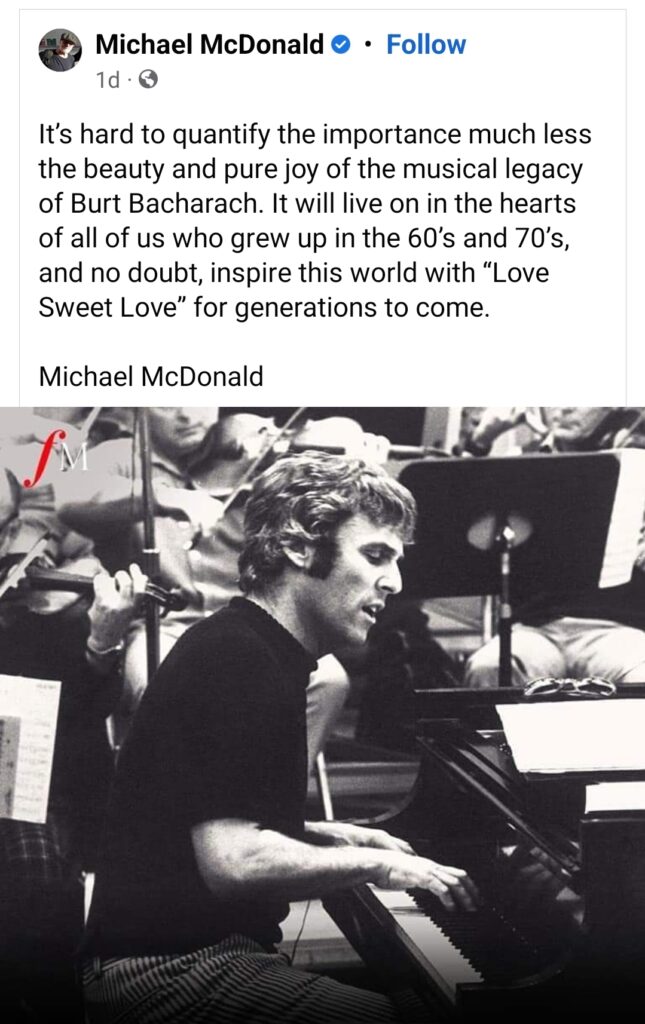
A New Partnership
Mr. Bacharach endured several fallow years, personal as well as professional — his marriage to Ms. Dickinson was over long before they divorced in 1981 — but experienced a commercial resurgence in the 1980s through his collaboration with the lyricist Carole Bayer Sager, whom he married in 1982.
Mr. Bacharach and Ms. Sager hit their commercial peak in 1986 with two No. 1 hits: the Patti LaBelle-Michael McDonald duet “On My Own” and the AIDS fund-raising anthem “That’s What Friends Are For,” which went on to win the Grammy for song of the year. Originally recorded by Rod Stewart for the soundtrack of Ron Howard’s 1982 movie “Night Shift,” and redone by an all-star quartet billed as Dionne and Friends— Ms. Warwick, Stevie Wonder, Gladys Knight and Elton John. “That’s What Friends Are For” was Mr. Bacharach’s last major hit. He and Ms. Sager divorced in 1991.
Burt Freeman Bacharach was born in Kansas City, Mo., on May 12, 1928. His father, Bert Bacharach, was a nationally syndicated columnist and men’s fashion journalist who moved his family to Forest Hills, Queens, in 1932. His mother, Irma (Freeman) Bacharach, was an amateur singer and pianist who encouraged Burt to study music. He learned cello, drums and piano.
While still under-age, he sneaked into Manhattan jazz clubs and became smitten with the modern harmonies of Dizzy Gillespie and Charlie Parker, which would exert a huge influence on him.
After graduating from Forest Hills High School, Burt studied music at several schools, including McGill University in Montreal and the Mannes School of Music in New York. Among his teachers were the composers Henry Cowell and Darius Milhaud. While serving in the Army in the early ’50s, he played piano, worked as a dance-band arranger and met the singer Vic Damone, with whom he later toured as an accompanist.
Mr. Bacharach became the German actress and singer Marlene Dietrich’s musical director in 1958 and toured with her for two years in the United States and Europe. Other performers he accompanied in the 1950s included the Ames Brothers, Polly Bergen, Georgia Gibbs, Joel Grey, Steve Lawrence and a little-known singer named Paula Stewart, who in 1953 became his first wife. They divorced in 1958.
Mr. Bacharach spent the 1950s accompanying famous performers, including the German actress and singer Marlene Dietrich, pictured with him in 1960.Credit…Werner Kreusch/Associated Press
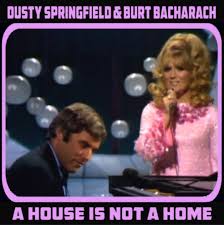
The Bacharach-David songwriting team enjoyed immediate success in 1957 with Marty Robbins’s “The Story of My Life” and Perry Como’s “Magic Moments.” Mr. Bacharach’s emerging melodic signature was discernible in early 1960s hits like Chuck Jackson’s “Any Day Now” (lyrics by Mr. Hilliard) and “Make It Easy on Yourself” (lyrics by Mr. David), a success for Jerry Butler in the United States and the Walker Brothers in Britain. In their Gene Pitney hits “(The Man Who Shot) Liberty Valance” and “Twenty Four Hours From Tulsa,” the team adopted a swaggering quasi-western sound.
All the elements of Mr. Bacharach’s style coalesced in Ms. Warwick’s recordings, which he produced with Mr. David and arranged himself. In the typical Warwick hit, her voice was surrounded by strings and backup singers, the arrangements emphatically punctuated by trumpets echoing the influence of Herb Alpert’s Tijuana Brass.
Among the other artists who had hits with the team’s songs were Jackie DeShannon (“What the World Needs Now Is Love”), Dusty Springfield (“Wishin’ and Hopin’,” “The Look of Love”), Tom Jones (“What’s New Pussycat?”) and the 5th Dimension (“One Less Bell to Answer”). But Ms. Warwick was their definitive interpreter.
A Reunion
After the “Lost Horizon” debacle, Mr. Bacharach worked predominantly as a concert performer, conducting his own instrumental suites and singing his own songs in an easygoing voice with a narrow range. He periodically released solo albums, of which the most ambitious was “Woman” (1979), a primarily instrumental song cycle recorded with the Houston Symphony. But these records had a negligible commercial impact.
Time eventually healed the wounds from Mr. Bacharach’s split with Mr. David and Ms. Warwick, and he reunited first with Ms. Warwick most notably for “That’s What Friends Are For” and later with Mr. David, for “Sunny Weather Lover,” recorded by Ms. Warwick in the early 1990s. He found his greatest interpreter since Ms. Warwick in the pop-soul balladeer Luther Vandross, whose lush 1980s remakes of “A House Is Not a Home” and “Anyone Who Had a Heart” transformed them into dreamy quasi-operatic arias decorated with florid gospel melismas.
Mr. Bacharach married Jane Hansen, his fourth wife, in 1993. She survives him, along with their son, Oliver; their daughter, Raleigh; and a son, Cristopher, from his marriage to Ms. Sager. Nikki Bacharach, his daughter with Angie Dickinson, committed suicide in 2007.
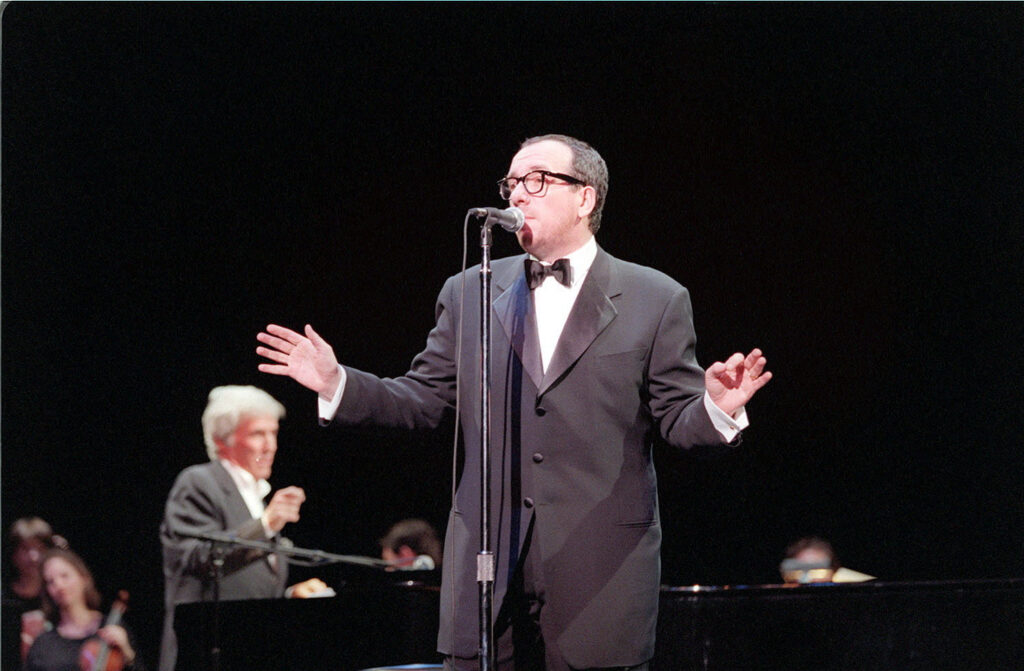
Mr. Bacharach accompanied the singer-songwriter Elvis Costello at Radio City Music Hall in New York in 1998.Credit…James Estrin/The New York Times
In his 60s, Mr. Bacharach found himself regarded with awe by a younger generation of musicians. Bands like Oasis and Stereolab included his songs in their repertoire. The British singer-songwriter Elvis Costello, a longtime admirer, collaborated with him on the ballad “God Give Me Strength” for the 1996 film “Grace of My Heart,” loosely based on the life of Carole King. That led them to collaborate on an entire album, “Painted From Memory” (1998), arranged and conducted by Mr. Bacharach, for which they shared music and lyric credits.
A track from that album, “I Still Have That Other Girl,” won a Grammy for best pop vocal collaboration. It was the sixth Grammy of Mr. Bacharach’s career; he would win one more, in 2006, when his “At This Time” was named best pop instrumental album.
The Bacharach-David team was inducted into the Songwriters Hall of Fame in 1972. Forty years later, shortly before Mr. David died at age 91, the two received the Gershwin Prize for Popular Song from the Library of Congress.
Mr. Bacharach in 2007. “Most composers sit in a room by themselves and nobody knows what they look like,” he wrote in his autobiography. “I get to make a direct connection with people.”Credit…Lisa Maree Williams/Getty Images
Mr. Bacharach remained in the public eye until the end. In December 2011, “Some Lovers,” a musical for which he wrote the music and Steven Sater wrote the lyrics, opened at the Old Globe in San Diego. “What’s It All About? Bacharach Reimagined,” a New York Theater Workshop production built on his songs, opened Off Broadway in December 2013. (An earlier revue based on the Bacharach-David catalog, “The Look of Love,” had a brief Broadway run in 2003.) As recently as 2020, Mr. Bacharach was still writing new music, releasing a collaboration with the singer-songwriter Melody Federer.
In 2013, Mr. Bacharach began collaborating with Mr. Costello, Mr. Sater and the television writer and producer Chuck Lorre on a stage musical based on the “Painted From Memory” album but also including new songs. That project never came to fruition, although some of the new material ended up on Mr. Costello’s recent albums. All the music from the “Painted From Memory” project is included in “The Songs of Bacharach & Costello,” a boxed set that also includes Mr. Costello’s recordings of Bacharach songs, which is scheduled for release next month.
Looking back on his career in his autobiography, Mr. Bacharach suggested that as a songwriter he had been “luckier than most.”
“Most composers sit in a room by themselves and nobody knows what they look like,” he wrote. “People may have heard some of their songs, but they never get to see them onstage or on television.” Because he was also a performer, he noted, “I get to make a direct connection with people.”
“Whether it’s just a handshake or being stopped on the street and asked for an autograph or having someone comment on a song I’ve written,” Mr. Bacharach added, “that connection is really meaningful and powerful for me.”
Alex Traub contributed reporting.
A correction was made on Feb. 9, 2023:
An earlier version of a picture caption with this obituary misstated the year Mr. Bacharach and the actress Angie Dickinson divorced. As the obituary correctly states, it was 1981, not 1980.
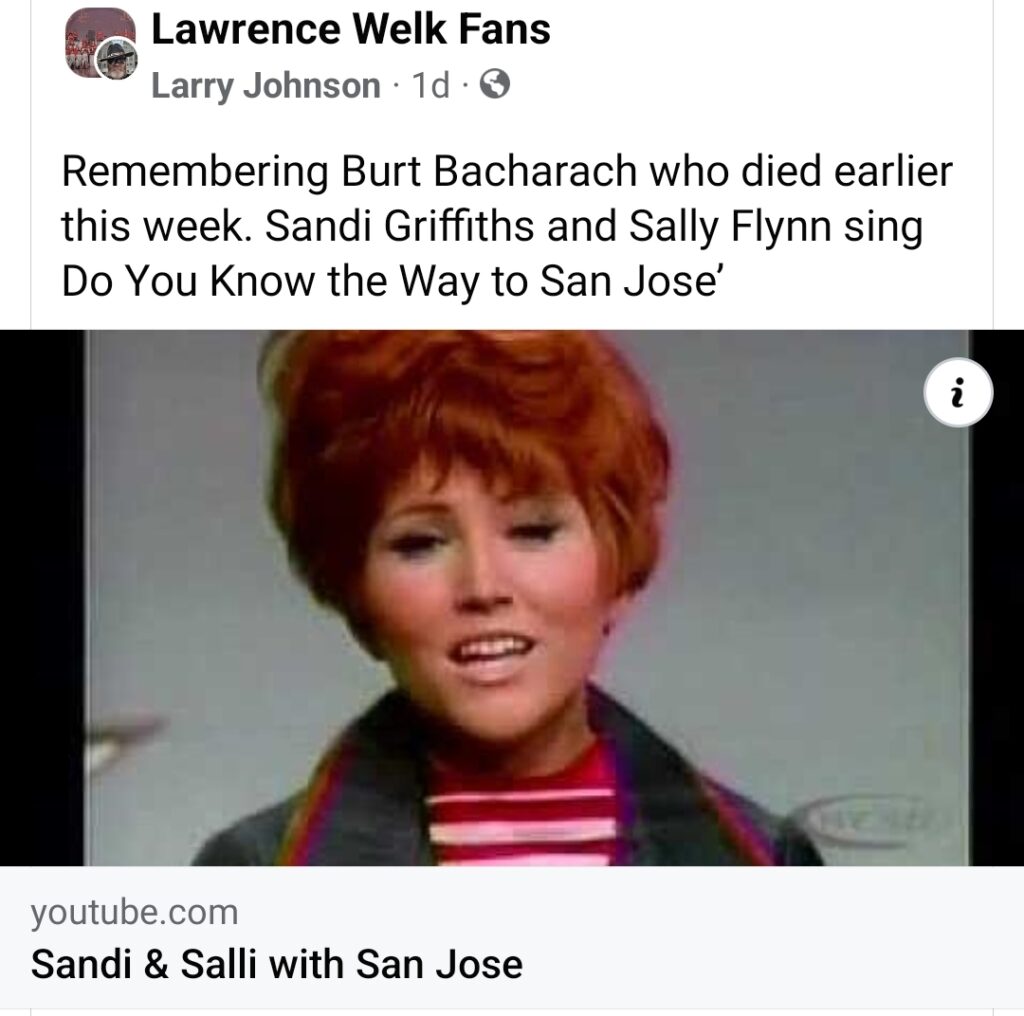
Burt Bacharach’s songwriting brilliance could stop you in your tracks
By Carole King
February 10, 2023
In 1962, the lyricist (and my then-husband) Gerry Goffin and I were driving up the Garden State Parkway when we heard Dionne Warwick’s recording of “Don’t Make Me Over” for the first time. We were stunned into silence. If we hadn’t been in the left lane between exits, it would have been a pull-over-to-the-side-of-the-road moment.
When the song was over, I exclaimed: “What was that?”
By “that” I meant the time signature changes, the instrumentation, and the unpredictable chords that allowed the melody to flow over them and carry the power of Warwick’s performance downstream.
Gerry turned off the radio. I knew that he was already thinking about lyrics for a song in which we would aspire to rise to the standard of what we later learned was the songwriting team of Burt Bacharach and Hal David.
That was my introduction to Burt, the brilliant pop composer and arranger who died Wednesday at 94. Later over the years I’d sometimes see Burt at an event or party, but our paths didn’t cross long enough for me to really get to know him. And though in 1999 I wrote a song with Hal, his most frequent collaborator, I never got the chance to write with Burt.
I also wrote an album with Carole Bayer Sager, whose musical legacy as a co-writer with Burt includes “That’s What Friends Are For.” In 1985, that song would become a hit for the all-star ensemble of Warwick, Elton John, Gladys Knight and Stevie Wonder.
During one of our writing sessions, Carole shared an anecdote that illustrates just how clear Burt was about his creative vision. The first time he played the “Friends” melody for her, he sang it with an eighth-note pickup before the first note of the first measure, like this: “la-LA.”
Carole said, “Do we need the pickup note?
Burt simply responded: “Yes.”
And that’s why the first two words of that song are “And I.”
You can hear the strength and clarity of Burt’s musical ideas and arrangements throughout his career. When he began performing his own songs in concert, his was the authentic voice of a songwriter conveying what he heard in his head directly from the muse. And his collaboration in songwriting and in concert with Elvis Costello was brilliant.
Burt and Hal received the Library of Congress Gershwin Prize for Popular Song in 2012. Their songs together and with other co-writers were recorded across genres and generations by artists such as Warwick, Marty Robbins, Jackie DeShannon, Dusty Springfield, the Carpenters, B.J. Thomas, Christopher Cross, Jerry Butler and Perry Como — with apologies to those I’ve left out. It appears that great songwriters attract great performers, and vice versa.
My daughter reminded me: “What about Burt’s horn lines? They’re as memorable as the hooks.”
Indeed, they are.
Close your eyes and think of them. “Walk on By.” “The Look of Love.” “Close to You.” Recall that lone euphonium and piano at the beginning and end of Jackie DeShannon’s recording of “What the World Needs Now.” And the flugelhorn in “I Say a Little Prayer.”
“What was that?”
The inspiring, soul-stirring legacy of Burt Bacharach. We are all so much richer for it.
